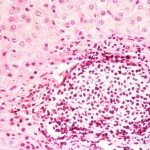Lien vers Pubmed [PMID] – 38451738
Lien DOI – 10.1093/gbe/evae040
Genome Biol Evol 2024 Mar; ():
Evolutionary convergences are observed at all levels, from phenotype to DNA and protein sequences, and changes at these different levels tend to be correlated. Notably, convergent mutations can lead to convergent changes in phenotype, such as changes in metabolism, drug resistance, and other adaptations to changing environments. We propose a two-component approach to detect mutations subject to convergent evolution in protein alignments. The “Emergence” component selects mutations that emerge more often than expected, while the “Correlation” component selects mutations that correlate with the convergent phenotype under study. With regard to Emergence, a phylogeny deduced from the alignment is provided by the user and is used to simulate the evolution of each alignment position. These simulations allow us to estimate the expected number of mutations in a neutral model, which is compared to the observed number of mutations in the data studied. In Correlation, a comparative phylogenetic approach is used to measure whether the presence of each of the observed mutations is correlated with the convergent phenotype. Each component can be used on its own, for example Emergence when no phenotype is available. Our method is implemented in a standalone workflow and a webserver, called ConDor. We evaluate the properties of ConDor using simulated data, and we apply it to three real datasets: sedge PEPC proteins, HIV reverse transcriptase, and fish rhodopsin. The results show that the two components of ConDor complement each other, with an overall accuracy that compares favorably to other available tools, especially on large datasets.




